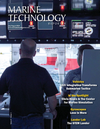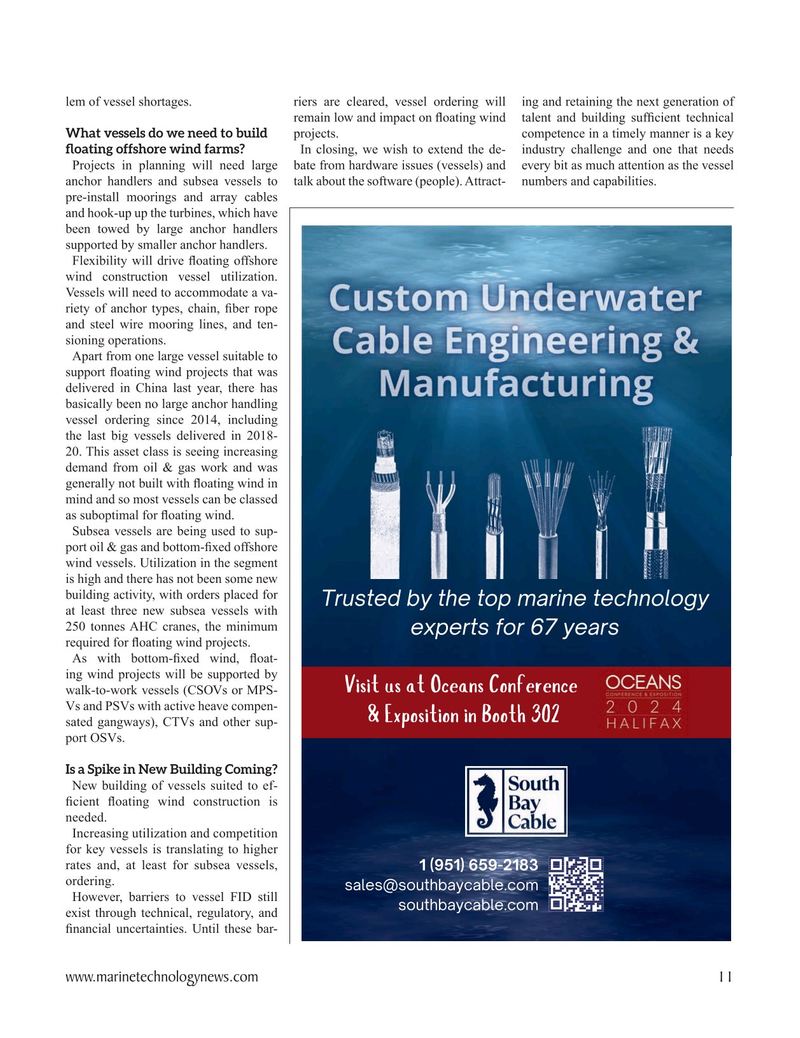
Page 11: of Marine Technology Magazine (July 2024)
Read this page in Pdf, Flash or Html5 edition of July 2024 Marine Technology Magazine
lem of vessel shortages. riers are cleared, vessel ordering will ing and retaining the next generation of remain low and impact on ? oating wind talent and building suf? cient technical
What vessels do we need to build projects. competence in a timely manner is a key ? oating offshore wind farms? In closing, we wish to extend the de- industry challenge and one that needs
Projects in planning will need large bate from hardware issues (vessels) and every bit as much attention as the vessel anchor handlers and subsea vessels to talk about the software (people). Attract- numbers and capabilities.
pre-install moorings and array cables and hook-up up the turbines, which have been towed by large anchor handlers supported by smaller anchor handlers.
Flexibility will drive ? oating offshore wind construction vessel utilization.
Vessels will need to accommodate a va- riety of anchor types, chain, ? ber rope and steel wire mooring lines, and ten- sioning operations.
Apart from one large vessel suitable to support ? oating wind projects that was delivered in China last year, there has basically been no large anchor handling vessel ordering since 2014, including the last big vessels delivered in 2018- 20. This asset class is seeing increasing demand from oil & gas work and was generally not built with ? oating wind in mind and so most vessels can be classed as suboptimal for ? oating wind.
Subsea vessels are being used to sup- port oil & gas and bottom-? xed offshore wind vessels. Utilization in the segment is high and there has not been some new building activity, with orders placed for
U½ËÁÇ??~ÛÇ??ǯº©r½?ª?Ç??ª¯¤¯?Û at least three new subsea vessels with 250 tonnes AHC cranes, the minimum ?Úº?½ÇÁ¯½ñòÛ?r½Á required for ? oating wind projects.
As with bottom-? xed wind, ? oat- ing wind projects will be supported by *%')%H' H% # walk-to-work vessels (CSOVs or MPS-
Vs and PSVs with active heave compen-
B/%'g'746 sated gangways), CTVs and other sup- port OSVs.
Is a Spike in New Building Coming?
New building of vessels suited to ef- ? cient ? oating wind construction is needed.
Increasing utilization and competition for key vessels is translating to higher rates and, at least for subsea vessels, ìCôðìcñðôCíìóî ordering.
Ár¤?ÁJÁ¯ËÇ?~rÛr~¤?ö¯©
However, barriers to vessel FID still
Á¯ËÇ?~rÛr~¤?ö¯© exist through technical, regulatory, and ? nancial uncertainties. Until these bar- www.marinetechnologynews.com 11
MTR #5 (1-17).indd 11 7/23/2024 1:40:02 PM

 10
10

 12
12
